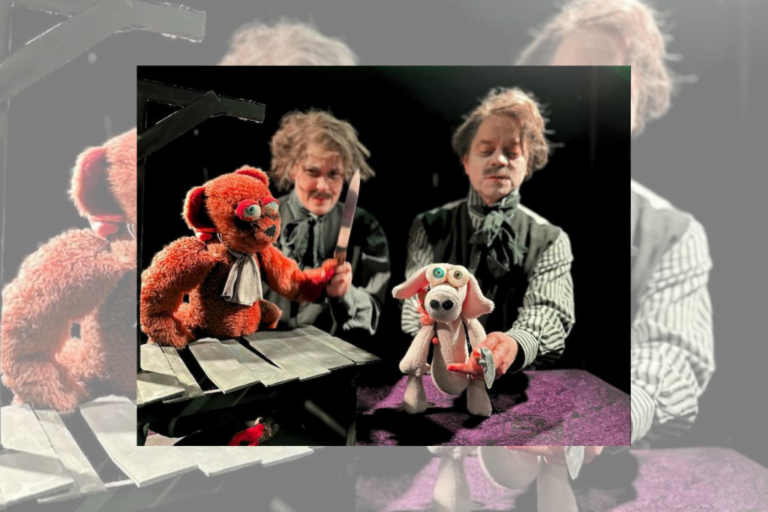REVIEW: The Lion King offers audiences a cat’s-eye view of sensory delights
It’s the return of the king…The Lion King, that is. Disney’s 1997 Tony-winning megahit, a mostly faithful adaptation of the 1994 film, has recently, royally returned in its second open-ended Toronto production at the Princess of Wales Theatre. Having last seen the show as a teenager at its 2000 Toronto premiere, I wondered if the spectacle would still hold up today. Would I roar with approval, or would I have to cub my enthusiasm?
“Spectacle” is the operative word; the show’s relatively bland book and leading roles aside, there is one major reason that The Lion King demands to be experienced, and her name is Julie Taymor. Taymor’s directorial and design concepts remain Pride Rock-solid, spilling out from the stage into aisles, balconies, and above the crowd. Accompanied by Richard Hudson’s elaborate scenic design, Taymor’s costumes and her masks and puppets, co-designed by Michael Curry, expertly play with levels, scale, and perspective to give audiences a cat’s-eye view of sensory delights, from an enormous elephant skeleton to an imposing wildebeest stampede.
If the show’s most iconic Elton John/Tim Rice collaboration is “Circle of Life” — and believe me, the stirring opener with its piercing Zulu cheer blows the roof off the place, Zama Magudulela as Rafiki combining her powerful pipes with a trickster’s glee — the design is also a 360-degree event. Taymor fills the hall with glorious animal contraptions that fuse with the performers in various ways, exploiting and exaggerating the angles of the human body by using wheels and stilts to create cheetahs, elephants, giraffes, herds of antelope, and flocks of birds. Even a termite mound spins ethereally across the stage.
Often described as “Kitty Hamlet,” the plot to The Lion King is, to quote another Disney musical, a tale as old as time. The birth of Young Simba (a cheeky and adorable Ira Nabong) ends the chances of his conniving uncle Scar (Salvatore Antonio, delighting in sneering camp) ever inheriting the throne from the powerful, wise Mufasa (David D’Lancy Wilson). Scar’s plans to usurp the kingdom with his cadre of hyenas involve successfully manipulating the growing Simba’s wanderlust, and the ensuing tragedy leaves the young lion in exile until some faithful friends give him the chance to make things right.
The simple story doesn’t have much in the way of character depth, with Simba (Erick D. Patrick, ably filling in for Aphiwe Nyezi) inheriting all of Hamlet’s indecision but little of his introspection, and a second act that’s more slapstick than Shakespearian. The show also essentially gives up on selling the love story between Simba and childhood friend Nala (Camille Eanga-Selenge, playing the grown-up version with steely determination), a deconstructed “Can You Feel the Love Tonight” only highlighting their relationship’s lack of development.
Still, the chorus packs a stirring sonic punch whenever there’s an ensemble number, particularly in the contributed songs and vocal arrangements by Lebo M and in composer Mark Mancina’s rousing “He Lives in You.” The fact that the singers are harmonizing while dressed as various types of savanna grassland makes it even more delightful.
Book writers Roger Allers and Irene Mecchi have also added some necessary psychological depth with a scene not present in the film, where the near death of one of Simba’s compatriots forces him to reflect on the past. And there’s plenty of fun to be had in the hijinks of a high-energy Zazu (Will Jeffs), Timon (Brian Sills), and Pumbaa (Trevor Patt), or the equally manic hyena triad led by a fantastic Jewelle Blackman.
In its first act, Wilson’s Mufasa grounds the show, projecting a quiet dignity and genuine concern for Simba’s future. While Scar’s mask is a particularly fluid extension of the actor’s body, always bobbing forward to cover his face and intentions, Mufasa’s honesty shines through as the character carefully removes his mask while having a heart-to-heart with his successor.
And therein lies the show’s main – or should I say mane? — attraction. Yes, there’s much high-tech wizardry in the offing (maybe not enough tech; amplification issues are sure to improve, but right now some solo lyrics are still getting lost, especially at the bottom of singers’ ranges), but the design and use of the production’s masks and shadow puppets evokes that of some of the world’s oldest traditions. When a delicately beautiful lioness mask suddenly releases paper streamer tears in a moment of sorrow, the tragedy feels so ancient that you might forget you just heard a cartoon bird make a joke about poutine. (Local references, it seems, are part of the open-ended production package.)
The hometown pride is justified; the Toronto talent involved is more than up to the challenge of staging such an ambitious production. For all its flaws and claws, The Lion King remains a show worth experiencing.
The Lion King is now playing at the Princess of Wales Theatre. Tickets are available here.
Intermission reviews are independent and unrelated to Intermission’s partnered content. Learn more about Intermission’s partnership model here.













Comments